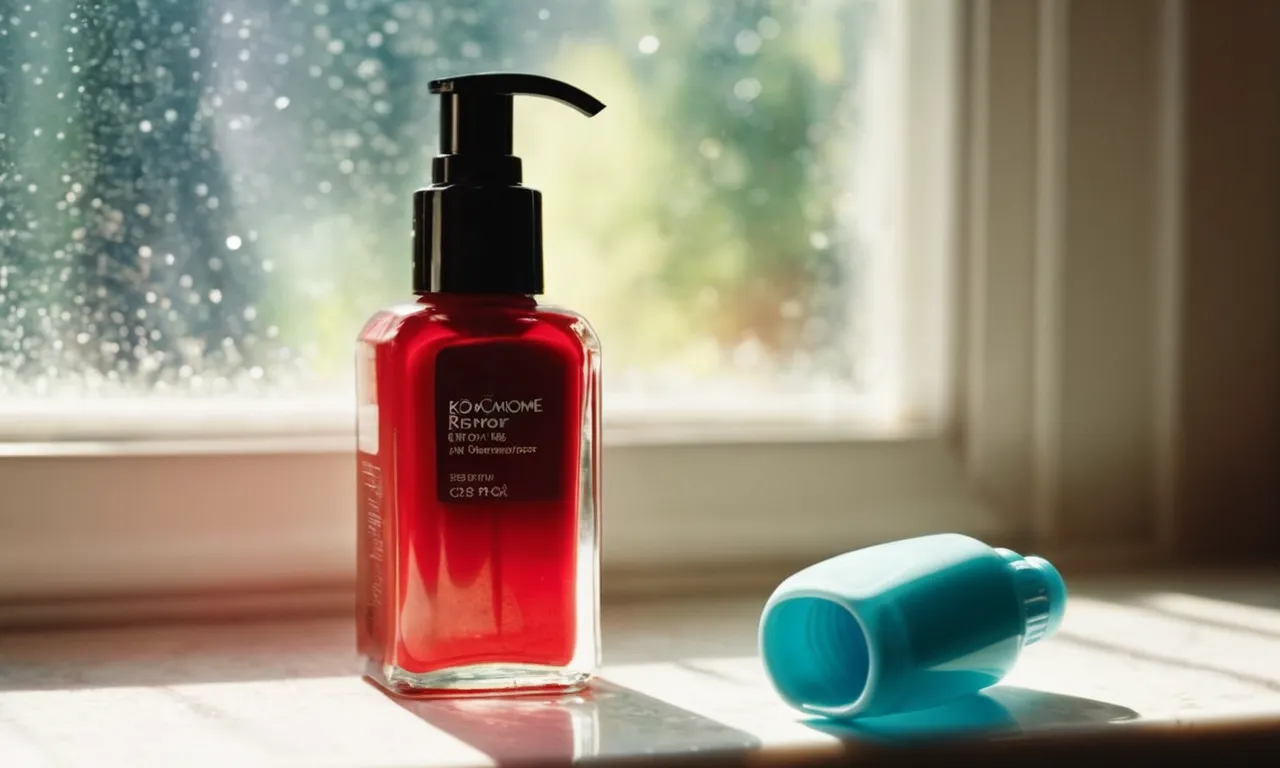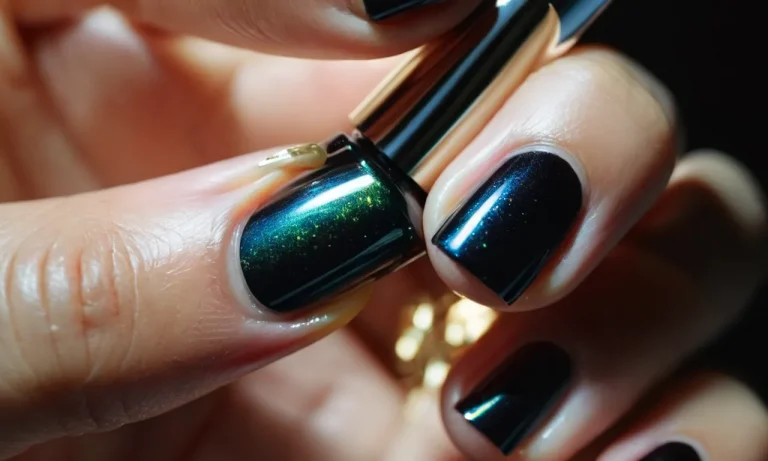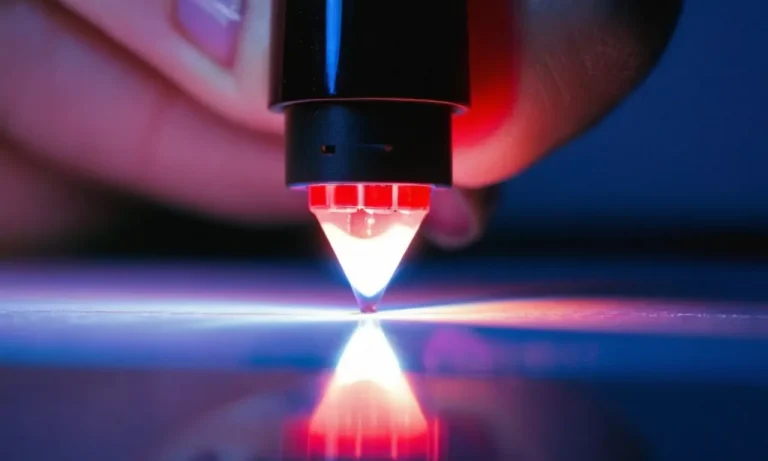Does Nail Polish Remover Evaporate?
If you’ve just finished removing your nail polish and notice the bottle feels lighter, you may be wondering if nail polish remover evaporates over time. As you’ll soon find out, the answer is yes – nail polish remover does evaporate, but the rate depends on several factors.
If you’re short on time, here’s a quick answer to your question: Yes, nail polish remover does evaporate over time due to its volatile chemical composition.
In this comprehensive guide, we’ll cover everything you need to know about nail polish remover evaporation. You’ll learn what exactly causes it to evaporate, tips to slow down the process, how to properly store it, and more.
What Causes Nail Polish Remover to Evaporate
Chemical Composition
Nail polish remover is primarily composed of acetone, a volatile organic compound that easily evaporates at room temperature. Acetone has a very low boiling point of 56°C (133°F), allowing it to transform from liquid to gas easily when exposed to air.
This property makes acetone excellent for removing nail polish, but also causes nail polish remover to evaporate quickly when the bottle is left open.
Exposure to Air
When nail polish remover is exposed to air, the acetone molecules absorb heat energy from the surrounding environment and gain enough kinetic energy to overcome the intermolecular forces holding them together in the liquid state.
This causes acetone molecules at the surface of the nail polish remover to escape freely into the air as a gas through the process of evaporation.
The greater the exposure of the nail polish remover to air, the greater the evaporation. Leaving the bottle cap off for extended periods leads to increased evaporation compared to briefly exposing it to air when applying to cotton balls or swabs.
Temperature
Increased temperature speeds up the evaporation rate of nail polish remover. At higher temperatures like 104°F (40°C) inside a hot car, the acetone molecules gain energy faster, allowing more to escape into the gaseous phase.
In contrast, cooler room temperatures around 68°F (20°C) result in slower evaporation.
Storing nail polish remover in hot environments can cause noticeable evaporation even when the bottle is closed tightly. Heat impacts evaporation more than air exposure duration in many cases.
Tips to Slow Down Evaporation
Store in an Airtight Container
One of the best ways to prevent nail polish remover from evaporating is to store it in an airtight container after each use. This prevents the volatile chemicals from interacting with air and evaporating over time.
Opt for containers specifically designed for nail care products, as they often have tight sealing lids built to limit air exposure.
Keep in a Cool, Dark Place
You’ll also want to store your nail polish remover somewhere dark and cool, like a bathroom cupboard or drawer. Sunlight and heat speed up evaporation, so keeping the bottle away from these conditions can extend its shelf life. The optimal storage temperature is below 77°F.
Buy Smaller Bottles
Since more air gets into the bottle each time you open it, buying smaller bottles means less air exposure over time. Opt for 2-4 oz bottles rather than 16 oz if you don’t go through remover quickly. Just make sure to still store the smaller bottles properly when not in use.
Use a Nail Polish Remover Pen
Using a nail polish remover pen allows you to use only a small amount of remover at a time. The pens have a sponge tip that dispenses remover as needed to rub away polish. This prevents the bulk of your remover from evaporation compared to regularly opening the bottle.
For more tips, check out this helpful video on storing nail polish remover to maximize its shelf life.
How to Properly Store Nail Polish Remover
Keep Lid Tightly Closed
Making sure the lid is tightly closed is crucial for preserving your nail polish remover and preventing it from drying out or evaporating. Exposure to air causes the acetone and other solvents to evaporate much more quickly. Always securely twist or snap the lid closed after each use.
Transfer to Smaller Bottle
If you have a large bottle of remover that you won’t use up quickly, consider transferring some to a smaller, secondary container. This reduces air exposure each time you open the main bottle. You can use a cleaned-out nail polish bottle, small plastic container, or anything with an air-tight lid.
Store Away from Heat Sources
Heat accelerates evaporation, so keep your nail polish remover away from warm places. Do not store it next to heat vents, on top of appliances generating warmth, or in a bathroom with lots of hot showers. Ideal storage temperatures are around 68-72°F.
Check Expiration Date
Like many beauty products, nail polish removers have a shelf life. Acetone-based formulas tend to last 1-2 years after opening. Check the expiration date and watch for changes in smell, texture, or performance over time.
Using old remover may not fully dissolve polish and can leave unwanted residue on nails.
Properly storing your nail polish remover helps maintain its potency and prevent waste. A few simple habits like tightening lids, downsizing containers, avoiding heat, and noting expiration dates can extend the useful life of your supply.
Signs Your Remover is Evaporating
Appears Less Full
One of the most obvious signs that your nail polish remover is evaporating is that the bottle will appear less full over time. As the volatile ingredients like acetone evaporate into the air, the liquid level in the bottle will slowly drop.
If you notice the bottle looks emptier than you remember even though you haven’t been using it much, evaporation is likely occurring.
Thicker Consistency
Another tell-tale sign is if the consistency of the remover becomes thicker and more viscous. As the lighter, more volatile components evaporate, the heavier ingredients are left behind. This increases the ratio of thickening agents like dimethyl glutarate and dimethyl adipate to solvents like acetone, resulting in a thicker texture.
Weakened Scent
Most nail polish removers have an strong chemical odor from the acetone and other powerful solvents. But as these substances evaporate into the air, the scent will become progressively weaker over time.
So if you notice the smell isn’t as pungent as you remember when you first opened it, evaporation may be to blame.
Takes Longer to Remove Polish
Lastly, if your remover is taking way longer to dissolve glitter polishes, strong top coats or other hard-to-remove lacquers, evaporation could be making it less effective. As the acetone percentage drops, the remover becomes less potent at breaking down nail color.
Try adding a few drops of pure acetone to restore its nail-cleaning power if it seems to have lost its oomph.
Checking for these common signs can clue you in that your nail polish remover is slowly evaporating in the bottle. Be sure to seal it tightly and store in a cool, dark place to slow the evaporation rate as much as possible.
When to Replace Your Nail Polish Remover
Consistencey Change
Over time, nail polish remover can become thinner in consistency as the acetone solvent evaporates. You’ll notice the liquid is less viscous and may not remove nail polish as effectively. This is a sign it’s time to replace your nail polish remover so you can easily wipe away lacquer.
No Longer Removes Polish Quickly
If your nail polish remover is taking longer to dissolve and remove nail polish, even after shaking the bottle, the acetone content has likely decreased. Acetone evaporates quickly, so older nail polish remover won’t work as fast. Replace it for fast, easy removal of your manicures.
Beyond Expiration Date
Like any beauty product, nail polish remover has an expiration date. This is usually 1-2 years from the manufacturing date. Acetone breaks down over time, so using expired nail polish remover may not fully remove lacquer. Check the bottle and if it’s past the expiration date, get a fresh one.
Cloudy Appearance
When nail polish remover is freshly opened, it should be a clear liquid. Over time as the acetone evaporates, it can take on a cloudy, opaque appearance. A cloudy look means the formula is no longer pure and likely won’t work as effectively.
A cloudy bottle is a telltale sign it’s time to replace your nail polish remover.
Conclusion
In summary, nail polish remover does evaporate over time due to its volatile ingredient composition and exposure to air. Storing it properly in an airtight container away from heat can help slow the evaporation process.
Be on the lookout for signs like a less full bottle, change in consistency, and difficulty removing polish as cues it may be time to replace your nail polish remover. Using good storage practices and buying smaller quantities can help ensure you always have fresh remover ready when you need it.







